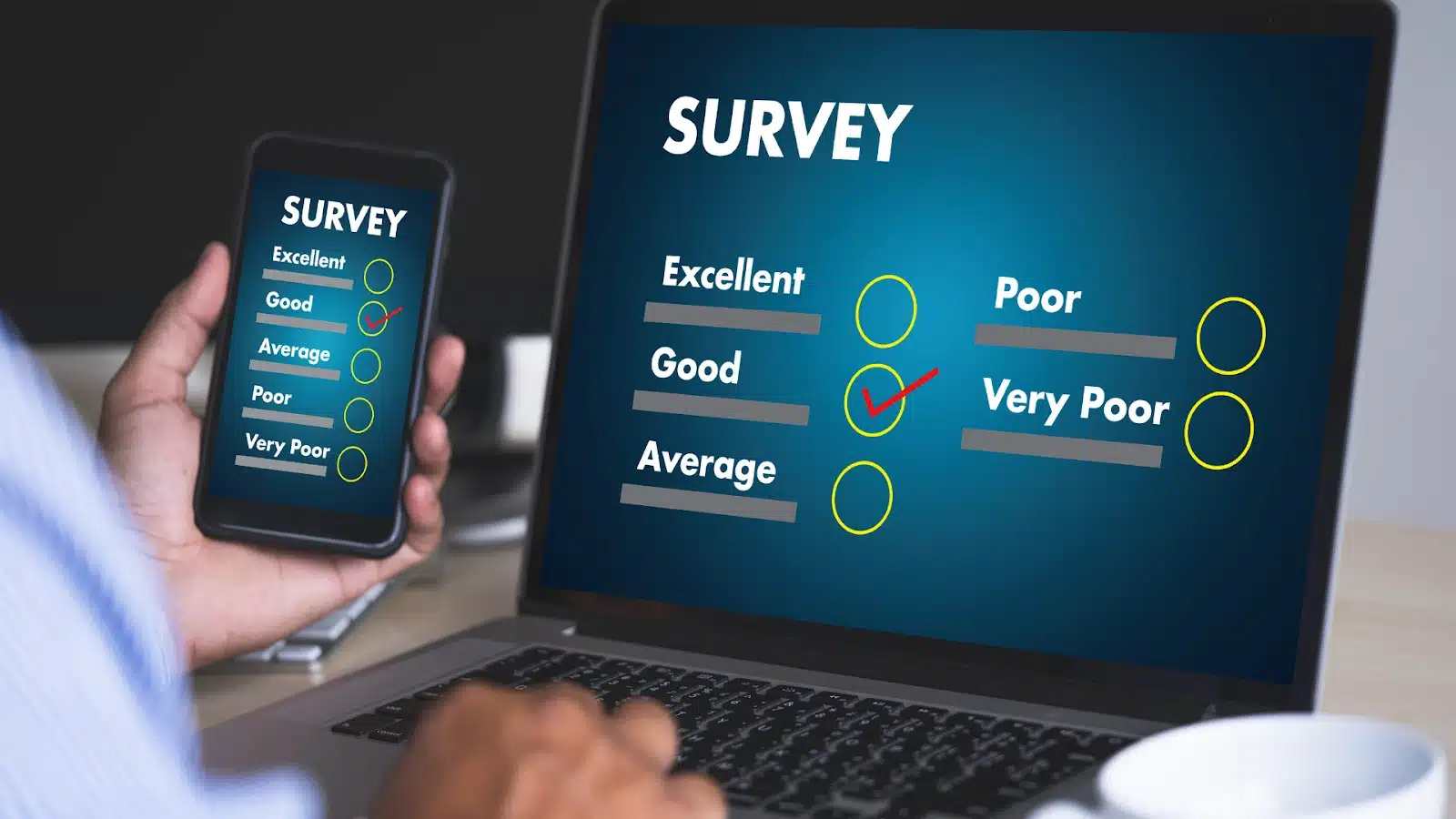
Customer Survey Examples That Lead to Actionable Insights
Surveys are an essential tool for businesses seeking to understand their customers better. They provide insights that can drive decision-making, enhance products, and improve customer satisfaction. However, not all surveys yield valuable insights. Crafting effective customer surveys requires a strategic approach. This article explores various customer survey examples that can lead to actionable insights, ensuring businesses can make informed decisions based on the feedback received.
Understanding the Importance of Customer Surveys
Customer surveys are vital for gathering feedback directly from the source—your customers. They help identify strengths and weaknesses in products or services, gauge customer satisfaction, and understand market trends. By leveraging this information, companies can adapt their strategies to meet customer expectations more effectively. These surveys not only provide a snapshot of current customer sentiment but also serve as a valuable tool for long-term strategic planning. For instance, tracking changes in customer feedback over time can reveal shifts in preferences or emerging needs, allowing businesses to stay ahead of the competition.
Moreover, surveys can uncover pain points that customers may not express directly. For instance, a sales manager like Jamie, who regularly presents to clients, can benefit from understanding how her audience perceives her presentations. This feedback can lead to improvements in engagement and conversion rates during her pitches. Additionally, by analyzing survey results, Jamie might discover that certain visual aids resonate more with her audience, prompting her to refine her presentation materials for future meetings. This iterative approach not only enhances her skills but also strengthens her relationship with clients, as they see their feedback being taken seriously and implemented.
Types of Customer Surveys
There are several types of customer surveys that businesses can utilize, each serving a unique purpose. Some common types include:
- Satisfaction Surveys: Measure how satisfied customers are with a product or service.
- Net Promoter Score (NPS): Evaluates customer loyalty by asking how likely customers are to recommend a business.
- Product Feedback Surveys: Gather insights on specific features or overall product performance.
- Market Research Surveys: Assess market trends and customer preferences.
In addition to these, there are also post-purchase surveys that can provide immediate feedback on the customer experience right after a transaction. These surveys can help businesses understand the buying journey and identify areas for improvement, such as the checkout process or product delivery times. Furthermore, customer effort score (CES) surveys can gauge how easy it is for customers to interact with a company, which is increasingly important in a world where convenience is paramount.
Crafting Effective Survey Questions
The effectiveness of a survey largely depends on the questions asked. Open-ended questions can provide qualitative insights, while closed-ended questions can yield quantitative data. A mix of both is often the best approach.
For example, Jamie could ask her audience, “What aspects of the presentation did you find most engaging?” as an open-ended question, and follow it with a closed-ended question like, “On a scale of 1-10, how likely are you to recommend this presentation style to others?” This combination allows for a deeper understanding of audience perceptions. Additionally, incorporating demographic questions can help segment responses and tailor future presentations to specific audience groups. By understanding the backgrounds and preferences of her audience, Jamie can create more personalized and impactful presentations that resonate with different segments, ultimately leading to better outcomes in her sales efforts.
Examples of Customer Surveys That Drive Action
When designing customer surveys, it’s essential to consider the end goal. Here are some examples of surveys that can lead to actionable insights:
1. Post-Purchase Surveys
These surveys are sent immediately after a customer makes a purchase. They can help businesses understand the customer journey and identify areas for improvement. Questions might include:
- How did you find the purchasing process?
- What influenced your decision to buy?
- Was the information provided sufficient to make your decision?
For instance, a tech company could use post-purchase surveys to gather feedback on its online checkout process. If multiple customers report difficulties, the company can take immediate action to streamline the process. Additionally, by incorporating open-ended questions, businesses can gain deeper insights into specific pain points that may not be captured by standard questions. This qualitative feedback can be invaluable, as it may reveal underlying issues or customer sentiments that require attention.
2. Customer Experience Surveys
These surveys focus on the overall experience a customer has with a brand. They can be conducted at various touchpoints, such as after customer service interactions or following product delivery. Key questions may include:
- How satisfied were you with the customer service you received?
- Did the product meet your expectations?
- What could we do to improve your experience?
By analyzing the responses, businesses can identify trends in customer satisfaction and address specific issues. For example, if Jamie’s audience frequently mentions a lack of engagement during her presentations, she can explore tools like PresEngage to enhance interactivity and ensure every question is addressed in real time. Furthermore, tracking customer experience over time can help businesses measure the effectiveness of changes made in response to feedback, allowing them to adapt and evolve their service offerings continually.
3. Brand Perception Surveys
These surveys assess how customers view a brand in comparison to its competitors. Questions might include:
- What three words would you use to describe our brand?
- How do you think we compare to our competitors?
- What improvements would make you more likely to choose our brand over others?
Understanding brand perception can help businesses refine their marketing strategies and improve their positioning in the market. For example, if survey results indicate that customers find a brand to be less innovative than its competitors, the company can focus on showcasing new features or technologies in its marketing efforts. Additionally, conducting brand perception surveys regularly can help track shifts in consumer sentiment, enabling brands to respond proactively to changes in the competitive landscape. This ongoing dialogue with customers can foster loyalty and create a more engaged community around the brand.
Leveraging Technology for Enhanced Survey Insights
In today’s digital age, technology plays a crucial role in how surveys are conducted and analyzed. PresEngage offers innovative solutions that can transform traditional surveys into dynamic interactions.
AI-Powered Q&A
One of the standout features of PresEngage is its AI-powered Q&A capability. This technology allows presenters to engage with their audience in real time, answering questions as they arise. This not only enhances the presentation experience but also ensures that valuable feedback is captured instantly.
For instance, during a presentation, audience members can text their questions, which the AI can answer based on the content being presented. This means that presenters like Jamie can focus on delivering their message without worrying about missing important questions or insights. Moreover, the AI can analyze the sentiment behind the questions, providing presenters with a deeper understanding of audience reactions and concerns, which can be crucial for tailoring future content.
Seamless Integration and Analytics
Another advantage of using PresEngage is its ability to integrate with existing tools and provide actionable analytics. After a presentation, users can access engagement metrics, such as question volume and audience participation rates. This data can be invaluable for refining future presentations and ensuring that they resonate with the audience.
For example, if analytics show that certain topics generated more questions, presenters can delve deeper into those areas in subsequent presentations, ensuring they meet audience interests and needs. Additionally, the platform can track demographic data, allowing presenters to customize content based on the specific characteristics of their audience. This level of personalization not only enhances engagement but also fosters a more inclusive environment where diverse perspectives are acknowledged and valued.
Furthermore, the integration capabilities extend beyond just analytics; they allow for the seamless incorporation of multimedia elements into surveys and presentations. By embedding videos, infographics, or interactive polls, presenters can create a richer experience that captivates the audience’s attention and encourages participation. This multimedia approach not only makes the content more digestible but also caters to various learning styles, ensuring that all audience members can engage with the material effectively.
Turning Insights into Action
Collecting survey data is just the first step; the real challenge lies in turning those insights into actionable strategies. Here are some steps businesses can take to ensure they leverage survey findings effectively:
1. Analyze and Interpret Data
Once survey responses are collected, it’s crucial to analyze the data thoroughly. Look for trends, patterns, and recurring themes. This analysis can help identify key areas for improvement or highlight successful strategies that should be continued.
For example, if multiple customers express dissatisfaction with a specific feature, it may be time to reevaluate that aspect of the product. Conversely, if customers rave about a particular service, it can be beneficial to promote that feature more heavily in marketing efforts.
2. Develop an Action Plan
Based on the insights gathered, businesses should create a clear action plan. This plan should outline specific steps to address customer feedback, assign responsibilities, and set timelines for implementation.
For instance, if a survey reveals that customers want more interactive presentations, a company could implement tools like PresEngage to enhance engagement during future presentations. This proactive approach not only addresses customer concerns but also demonstrates a commitment to continuous improvement.
3. Communicate Changes to Customers
After implementing changes based on survey feedback, it’s essential to communicate these improvements to customers. This can be done through newsletters, social media, or direct communication. Letting customers know that their feedback has been heard and acted upon can enhance loyalty and trust.
For example, if Jamie introduces new interactive elements in her presentations based on audience feedback, she could share this update with her clients, highlighting her commitment to providing a better experience.
Best Practices for Conducting Customer Surveys
To maximize the effectiveness of customer surveys, consider the following best practices:
1. Keep Surveys Short and Focused
Long surveys can lead to respondent fatigue, resulting in lower completion rates. Aim for brevity while still gathering essential information. A focused survey with clear objectives will yield more reliable insights.
2. Ensure Anonymity and Confidentiality
Customers are more likely to provide honest feedback if they know their responses are anonymous. Assure respondents that their information will be kept confidential, which can lead to more candid insights.
3. Test Surveys Before Launching
Before sending out a survey, conduct a test run with a small group. This can help identify any confusing questions or technical issues, ensuring a smoother experience for all respondents.
Engage, Listen, Improve: Mastering Customer Feedback
Customer surveys are a powerful tool for businesses looking to gain actionable insights. By understanding the importance of surveys, crafting effective questions, leveraging technology, and implementing feedback, companies can significantly enhance their products and services. PresEngage can further streamline this process, making it easier for presenters to engage their audiences and capture valuable insights in real time.

Ultimately, the goal is to turn customer feedback into actionable strategies that drive business success. By following best practices and remaining committed to continuous improvement, businesses can foster stronger relationships with their customers and achieve lasting growth.
Engage Your Audience with PresEngage
Ready to elevate your presentations and harness the power of real-time, AI-driven audience engagement? With PresEngage, you can transform your surveys and presentations into interactive experiences that captivate your audience and provide actionable insights. Whether you’re a presenter, educator, or business professional, PresEngage is designed to help you connect and convert more effectively. Say goodbye to the barriers of traditional Q&A sessions and hello to seamless, CRM-integrated interactions. Start for FREE today and revolutionize the way you engage with your audience.
Present Smarter. Engage Answer Convert Close Remarkably.
Dazzle your audience with Real-Time Q&A powered by your AI Co-Presenter.(Patent Pending)
PresEngage™ makes you look brilliant by connecting with everyone, instantly.
No Credit Card Required. 100% Risk Free.
Frictionless Audience Experience GUARANTEED.






